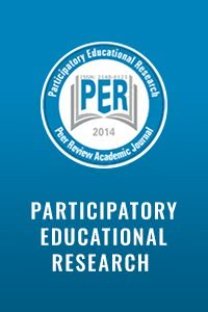New Trends on Mobile Learning in The Light of Recent Studies
Since the beginning of the century, with the introduction of mobile devices, use of the concept of mobile learning, became frequent, along with e-learning, m-learning, concept began to come on the agenda. It can be said that determining in what proportion and in which axis m-learning concept discussed in the literature would be important for revealing the issues that are not discussed enough. Starting from this basic premise, the purpose of this research is examining the researches in the literature within the last three years, and identifying new approaches. Literature review was limited with ScienceDirect (one of international databases) and Ulakbim (a database from Turkey). In the scope of the research, 45 studies, 37 from Science Direct, 8 from Ulakbim Social Sciences Database were selected. In the study, each article was investigated with document analysis method. Articles were classified and examined. According to five different criteria the results obtained by this research are summarized as follows: Selected works from Turkey are mostly descriptive studies which try to determine students or faculty members’ views. In almost all of these studies the opinions of the students were determined but the information about their past mobile learning experiences is not included in the researches. The studies selected from ScienceDirect have highly diversed subjects, they based on from different disciplines, different learning approaches and mostly try to find out the effectiveness of a developed original environment. In addition, in different subject areas in mobile learning, issues like students' academic achievements, attitudes and perceptions of influence, teacher/teaching staff attitudes or perceptions, adaptable mobile environments, cooperative mobile environments, mobile environments self-regulated learning, mobile environments of information presented in different ways the effects of game-based mobile learning, note-taking with mobile tools, mobile applications in formal education, and mobile augmented reality environments become prominent.
Keywords:
Mobile Learning, Distance Education Web based learning,
___
- Bauer, M. W. (2003). Classical content analysis: A review. In M. W. Bauer, & G. Gaskell (Eds.), Qualitative researching with text, image and sound (pp. 131–151). London: Sage Publication
- Chang, C., Chen,T., Hsu, W. (2011). The study on integrating WebQuest with mobile learning for environmental Education. Computers & Education 57: 1228–1239
- Cochrane, T. (2010). Mobile web 2.0: Bridging learning contexts. In S. Caballé, F. Xhafa, T. Daradoumis, & A. A. Juan, Architectures for distributed and complex m-learning systems: Applying intelligent technologies (s. 123-151). UAS: Information Science Reference.
- Cohen, L., Manion, L., Morrison, K. (2007). Research Methods in Education (6th Ed.). NY: Routledge.
- Corlett, D., Sharples, M., Bull, S. ve Chan, T. (2005). Evaluation of a mobile learning organiser for university students. Journal of Computer Assisted Learning,21, 162-170
- Çakır, H. (2011). Mobil öğrenmeye ilişkin bir yazılım geliştirme ve değerlendirme. [A software development and evaluation of mobile learning] Cukurova University Faculty of Education Journal: 40:, 01-09
- Çepni, S. (2007). Araştırma ve proje çalışmalarına giriş (3.Baskı), Methods and classifications used in educational research,Trabzon: Celepler Pub: 76
- Gay, G., Stefanone, M., Grace-Martin, M. & Hembrooke, H. (2001) The effects of wireless computing in collaborative learning environments. International Journal of Human–Computer Interaction, 13(2): 257–276.
- Goktas, Y., Kucuk, S., Aydemir, M., Telli, E., Arpacik, O., Yildirim, G., & Reisoglu, I. (2012). Educational technology research trends in Turkey: A content analysis of the 2000-2009 decade. Educational Sciences: Theory & Practice, 12(1), 177–199
- Hsu, C., Ho, H. (2012).The design and implementation of a competency-based intelligent mobile learning system. Expert Systems with Applications 39: 8030–8043
- Karasar, N. (2002). Bilimsel araştırma yöntemi [Research Methods], 11.Press, Ankara: Nobel Pub.
- Kelly, A. E., & Lesh, R. A. (2000). Trends and shifts in research methods. In A. E. Kelly, & R. A. Lesh (Eds.), Handbook of Research Design in Mathematics and Science Education (pp.35–44). Mahwah, NJ: Lawrence Erlbaum Associates.
- Kucuk, S., Aydemir, M., Yildirim, G., Arpacik, O., Goktas, Y. (2013). Educational technology research trends in Turkey from 1990 to 2011. Computers & Education 68 (2013) 42–50.
- Oran, M.K. ve Karadeniz, Ş. (2007). The role of mobile learning role in intenet based distance education. Available at: http://ab.org.tr/ab07/bildiri/66.pdf
- Ozan, Ö. (2013): Bağlantıcı mobil öğrenme ortamlarında yönlendirici destek [Connectionism router support mobile learning environment]. Unpublished PhD Thesis . Anadolu University.
- Quinn, C. N. (2000). mLearning: Mobile, wireless, in-your-pocket learning. http://www.linezine.com/2.1/features/cqmmwiyp.htm
- Reychav, I., Wu, D. (2014). Exploring mobile tablet training for road safety: A uses and gratifications perspective. Computers & Education 71 (2014) 43–5.5
- Saran, M., Seferoğlu, G. ve Çağıltay, K. (2009). Mobile assisted language learning: English pronunciation at learners’ fingertips. Eurasian Journal of Educational Research,34, 97-114.
- Sharples, M., Taylor, J., Vavoula, G. (2005). Towards a Theory of Mobile Learning. In Proceedings of m-learn Conference, Cape Town:2005, South Africa.
- Simsek, A., Ozdamar, N., Uysal, O., Kobak, K., Berk, C., Kılıcer, T., et al. (2009). Current trends in educational technology research in Turkey in the new millennium. Educational Sciences: Theory & Practice, 9(2), 941–996.
- Vogel, J. J., Vogel, D. S., Canon-Bowers, J., Bowers, C. A., Muse, K., & Wright, M. (2006). Computer gaming and interactive simulation for learning: a meta-analysis. Educational Computing Research, 34, 229–243.
- Wu, W., Jim Wu, Y., Chen, C., Kao, H., Lin, C, Huang, S. (2012). Review of trends from mobile learning studies: A meta-analysis. Computers & Education 59 (2012) 817– 827.
- Zawacki-Richter, O., Bäcker, E. M., & Vogt, S. (2009). Review of distance education research (2000 to 2008): analysis of research areas, methods, and authorship patterns. International Review of Research in Open and Distance Learning, 10(6), 21–45.
- ISSN: 2148-6123
- Yayın Aralığı: Yılda 6 Sayı
- Başlangıç: 2014
- Yayıncı: Özgen KORKMAZ
